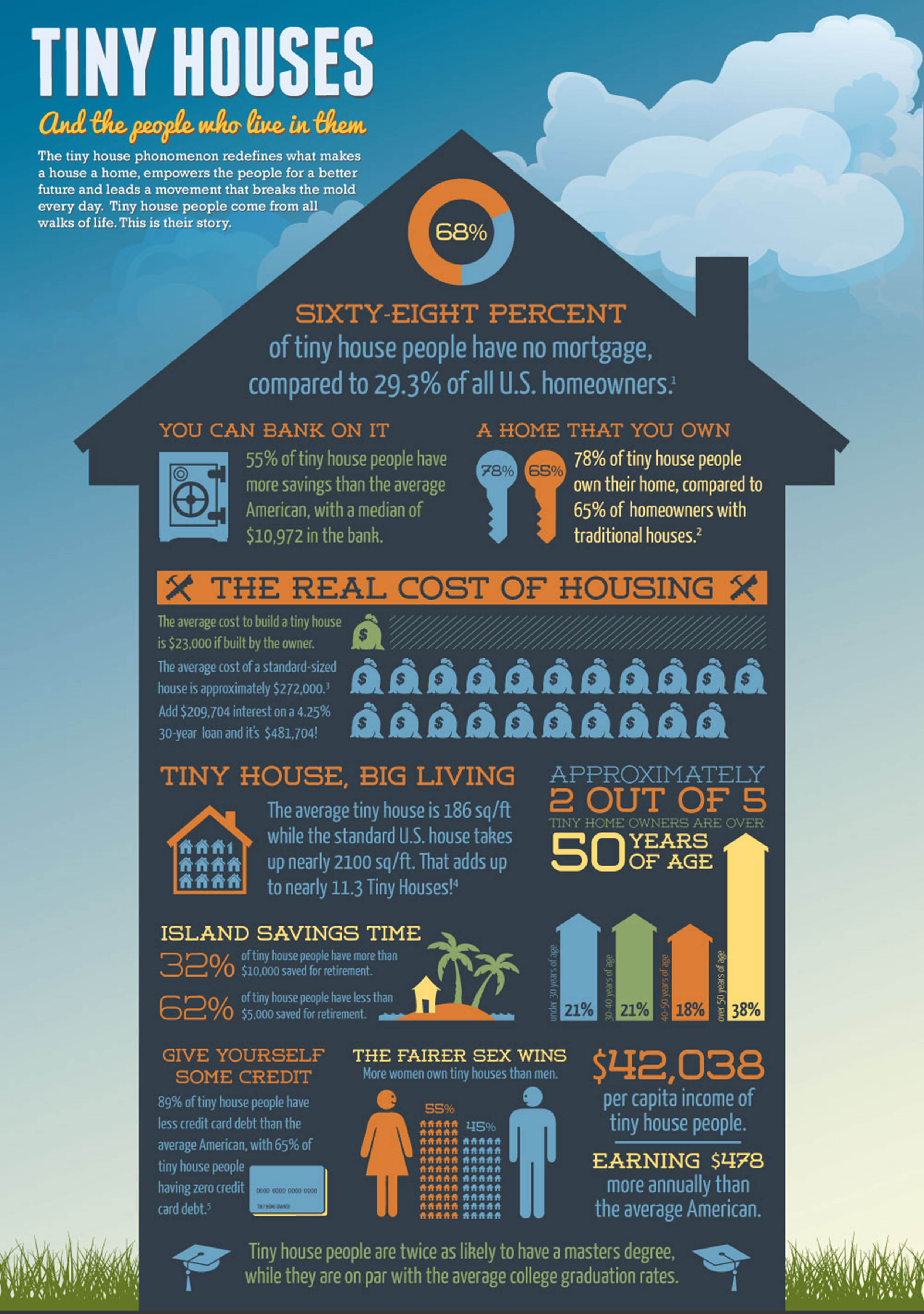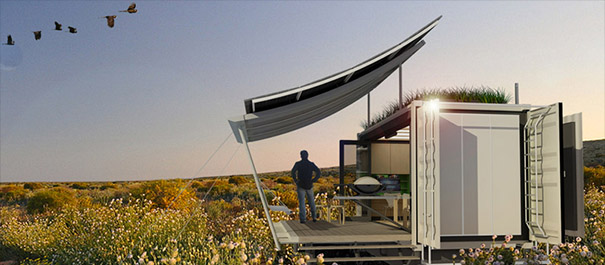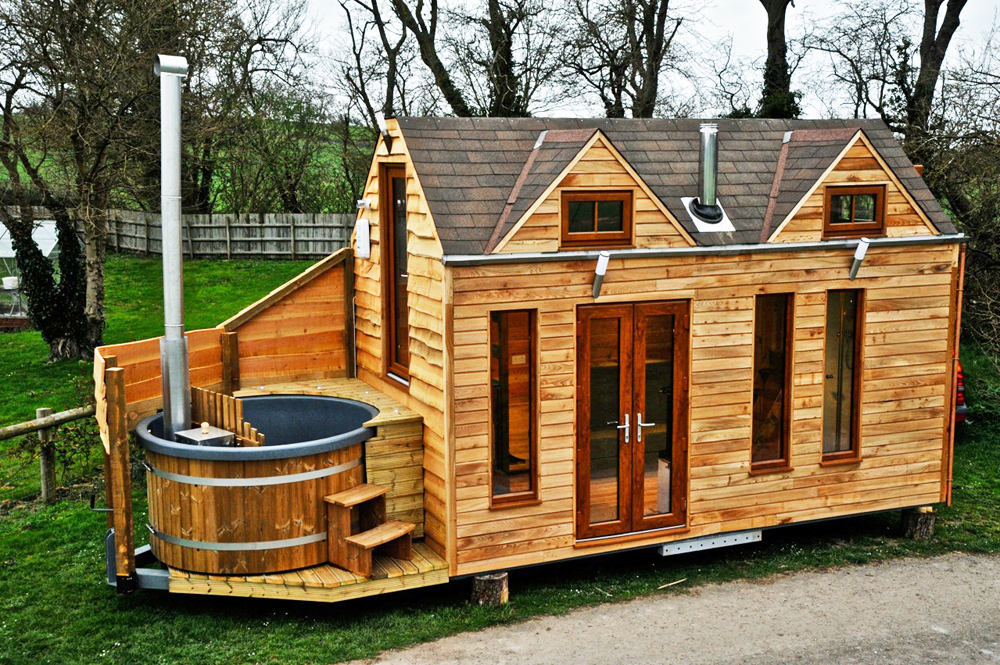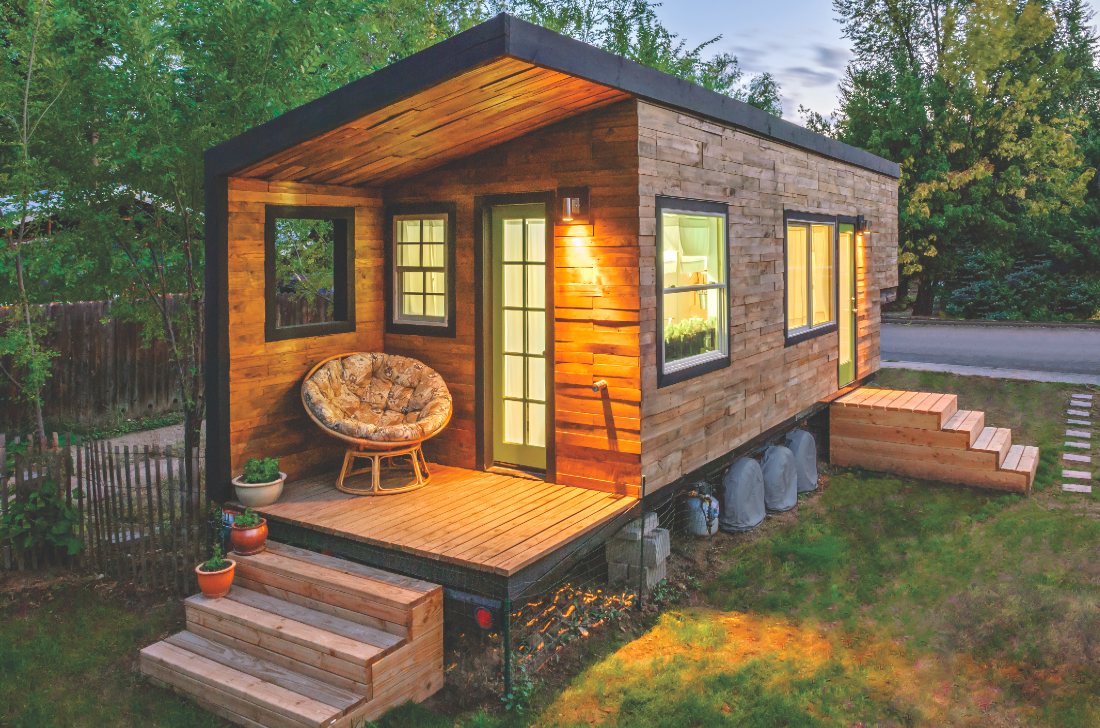Growing in popularity over the last decade, tiny houses are popping up around the country as more people decide to downsize their lives. While the structures often measure less than 300 square feet, the tiny house movement isn’t necessarily about sacrifice. While, some homeowners have discovered a small house
People have all kinds of reasons for choosing to live tiny. Some are looking for ways to own a home without a mortgage, some want a house they can take with them wherever they go, and some are just trying to tread more lightly on the Earth. Whatever their reasons, they’re part of a growing trend that’s gradually changing the way Americans talk – and think – about home.

Source: http://thetinylife.com/what-is-the-tiny-house-movement/
Types of Tiny Houses
Tiny houses come in a wide variety of shapes and styles. A tiny home can be a log cabin in the woods, a luxurious waterfront cottage, or even a repurposed shipping container.

1.Tumbleweed Tiny Houses
Its four basic house models all have wood exteriors, some rustic in style and some modern. They range in size from 117 to 221 square feet, and all of them are mounted on trailers for towing. Buyers can have a house built to order or buy the plans and build their own.

2. Tiny Texas Houses
Owners who want something a bit larger and more permanent can try Tiny Texas Houses. These come in two sizes, 240 or 336 square feet, and are built entirely out of salvaged materials. Designed in a casual, rustic style, these houses are built in Luling, Texas and then shipped to the buyer’s site and installed.

3. Shipping Container Homes
Another type of salvaged material used in tiny houses is metal shipping containers. Once these have served their purpose – carrying goods from one location to another – it usually isn’t cost-effective to ship them back empty so they can be reused. Rather than letting them end up as scrap metal, tiny house manufacturers transform them into modern-looking prefab homes. One example is the G-Pod, which contains all the materials necessary to build the house inside a container that can be shipped, unpacked, and assembled on-site.

4. Tiny Luxury Homes
Although tiny houses are small, they don’t have to be simple. A story in Forbes features tiny luxury homes, tricked out with amenities such as home automation, surround sound, radiant in-floor heat, and tiny hot tubs. Although these houses are very expensive when priced by the square foot, they offer an opportunity to own a luxury home for as little as $35,000 – less than many luxury cars.

5. Micro-Apartments
Some tiny homes aren’t even houses – they’re “micro-apartments” for rent. These tiny apartments – usually less than 400 square feet – offer single people just starting out the chance to afford a place in the city, where the rent on a full-sized apartment would be out of their price range. Micro-apartment buildings tend to feature amenities such as shared space for entertaining and storage, which help make up for the tiny size of the apartments themselves.
Advantages of Tiny Houses
1.Lower Expenses
A tiny house costs a lot less to build than a full-sized one. According to The Tiny Life, it’s possible to build a tiny house for $23,000 on average. The average price for a full-sized house, by contrast, is $272,000 – more than 10 times as much. Cutting back on housing expenses enables tiny house owners to put more money toward luxuries (such as travel), save for retirement, or simply work less.
2. No Mortgage
Most people can’t afford to buy a house without taking out a mortgage, which only adds to the long-term cost. A 30-year mortgage at 4.5% interest raises the overall cost of the average house to $482,000. The Tiny Life reports that 68% of tiny house owners own their homes free and clear, as compared to just 29% of all homeowners.
3. Lower Energy Use
Tiny houses don’t just cost less upfront – they’re also much cheaper to maintain. Bills for electricity, fuel, water, and waste disposal are all much lower. In addition, it’s much easier to live off the grid in a tiny house, since you can heat the entire space with a small wood stove and power it with a small solar array. Many tiny houses even have composting toilets, which break down waste without needing to be hooked up to a sewage system.
4. Freedom of Movement
A tiny house has a small footprint, so it doesn’t require a large plot of land. In addition, many small houses are built on trailers, so their owners can take them along whenever they move to a new city. For many people, this is a way to enjoy a life on the road without giving up all the comforts of home.
5. Easier Maintenance
A tiny house is easy to take care of. With less space to clean and fewer appliances to repair, tiny house owners can spend less time on chores and more on their work, hobbies, and relationships.
6. Harmony With Nature
The tiny house movement goes hand in hand with the environmental movement. Tiny houses require less material to build and less energy to power. Also, their small size makes them easier to site in a place that’s close to nature.
If you want to learn more about property investment, click the following link: PropertySeminar.com.my
How to use creative strategy to own a property in Malaysia? Click the following link to learn more: PropertyMillionaireIntensive.com
